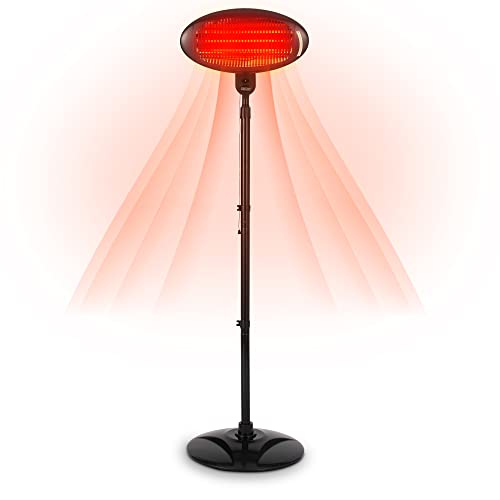How to Choose a Patio Heat Lamp Electric
When you want to heat your patio, there are several options. Unlike propane models that require refills electric heaters can provide instant heat by flicking the switch or pressing the button.
They don't emit gasses that could cause the risk of health hazards. Some units are equipped with adjustable heating settings to allow for different distances.
Type of Heater
With the appropriate patio heater, you can comfortably enjoy your outdoor living spaces well into the night, and throughout the seasons. There are a variety of patio heaters, such as freestanding propane and natural gas models, as in addition to ceiling- or wall-mounted electric radiant heaters. The choice you make will depend on the size of your space, your power source and personal preference.
The majority of patio heaters are powered by electricity or liquid gas, or natural, and produce heat through convection and radiant heating. Their output of heat is measured in watts, and can be converted to British thermal units (BTUs) to compare. Some models can be adjusted in temperature settings that give you more flexibility.
A patio heat lamp incorporates the burner on top of a pole with a perforated screen that reflects the flames and radiates the heat downwards to warm people, furniture and other objects. Some patio heat lamps come with a reflective reflector over the burner and can be silvered to limit the amount of heat is lost upwards.
Gas patio heaters are the most common patio heaters. They are able to heat multiple tables quickly and evenly. These heaters are portable and run from propane tanks or plumbed into your natural gas line, with the latter providing greater convenience and lower initial installation costs but requiring an ongoing cost of fuel.
A increasing number of homes are fitted with natural gas lines, making these the perfect solution for those who prefer gas-powered patio heaters. These heaters are easy to install, however they require a gas line that's properly installed and operating to be secure. Natural gas heaters that are portable come with extension hoses to overcome this issue, however these can be a tripping risk and can create an additional fire risk when not being used.
Safety
The majority of electric patio heaters are safe to use in enclosed areas due to their ability for heat to radiate outward, instead of upwards toward material that is combustible, such as the roof. They are not designed for use under an unprotected roof. The heater must be placed at a minimum of 6" away from the ceiling, or 18" away from the wall in order to avoid fire hazards.
The propane and gas patio heaters are only suitable for installation in enclosed areas that are fitted with an enduring cover made for outdoor use. The covers are typically made of fire-resistant fabric and come with a roof which can be closed. patio heater electric free standing with these kinds of outdoor patio heaters is due to the flame and fumes they release. They should be placed away from items that ignite, such as chairs and curtains.

Follow the guidelines and safety guidelines of the manufacturer when installing a patio heater or patio heat lamp. Be sure to select one that has UL and CSA certifications, and read the owner's guide carefully. Be extra cautious with pets and children and make sure the heater is not in their reach while it's operating. Some patio heaters that are freestanding like EUROM have a built-in tipping safeguard that automatically shuts off the device in the event that it falls over.
If your patio heater is connected to natural gas lines, it's important to check the condition of the line regularly and to test it for leaks by an experienced professional. If the line is in need of replacement get it replaced by an experienced plumbing professional who is licensed. A professional will be able to determine whether the line is properly routed or should be routed through an underground pipe. In addition, a professional can make sure the heater in the patio is plugged into an outlet that is GFCI (ground fault circuit interrupter) rated to protect against electrical shocks and fires.
Installation
The height at which a patio heater is mounted affects the amount of heat it will radiate into the area. It is important that the heater be mounted in an appropriate distance from any surfaces such as plastic, which can deform and wood, which can become too hot. Depending on the model of the heater, you can choose to mount it on a structure or wall using traditional mounting brackets. outdoor heater for patio electric have a soft start feature, which decreases the peak current in order to protect your circuits.
